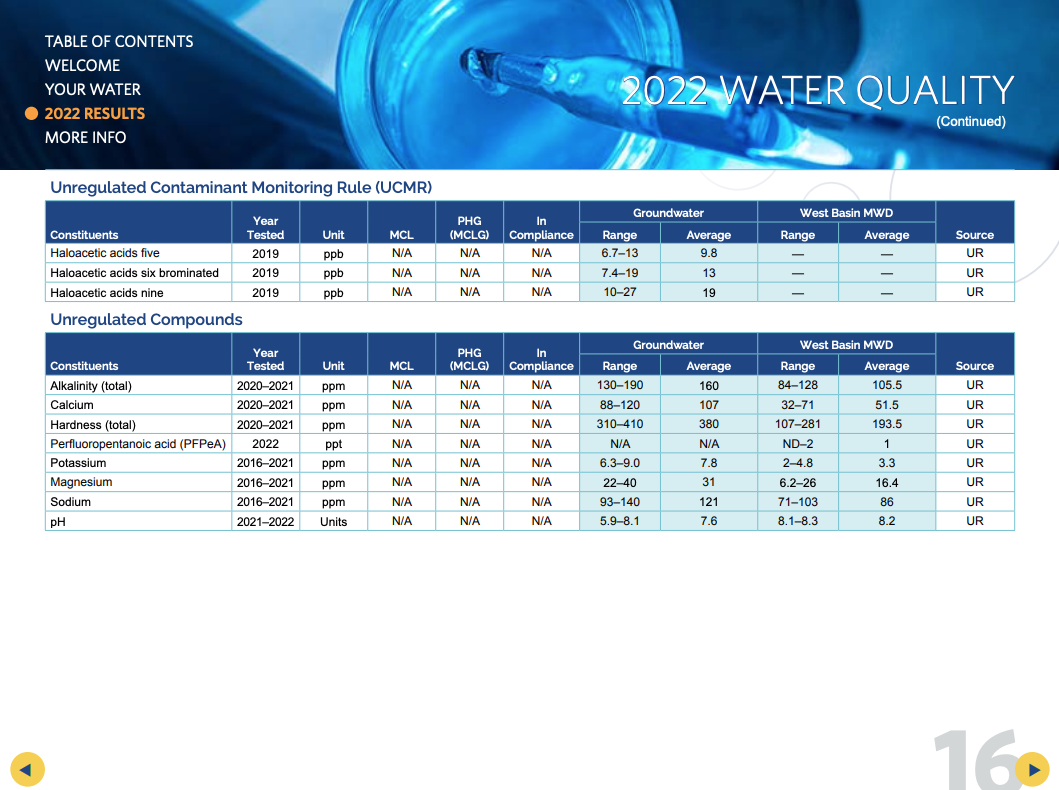Remember when I wrote that I wasn't that worried about PFAS chemicals in my drinking water? I'm still not worried about it. But several things stood out when I looked at the 2022 Hermosa Redondo Water Quality Report.
I expected to see small (but safe) amounts of Uranium from the imported drinking water purchased from Metropolitan Water District (via West Basin Municipal Water District). That's a blend of Colorado River and Sacramento-San Joaquin Delta water. For myriad reasons, water from the 4-corners states in the Colorado River Basin contains Uranium and Radium.
But, why does my local groundwater contain more Uranium than the water imported from the states where we used to mine Uranium, and make and test bombs? I posted that question on the social media platform formerly called Twitter and had my answer in minutes.
I found a map of active water wells from LA County Dept of Public Works. Unfortunately, I couldn't figure out how to download the map and combine it with other data so you'll just see a screenshot. Look at the 3 aqua balloon pins near the right of the map, just west of Inglewood Blvd.
See the old oil wells that used to operate in the vicinity of the active water wells?
EPA: Radioactive Waste Material From Oil and Gas Drilling
Rocks in and around certain oil- and gas-bearing formations may contain natural radioactivity. Drilling through these rocks or bringing them to the surface can generate waste materials that contain radioactivity.
[The EIR for West Basin's abandoned plans to build a desalination plant estimated that the RO-treated ocean water would have saved customers an average of $300/year in reduced plumbing and appliance replacement expenses. Coastal NIMBYs enjoying 100% imported river water blocked the plant despite support from inland communities using very hard groundwater like mine.]




No comments:
Post a Comment
Comments are open for recent posts, but require moderation for posts older than 14 days.